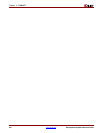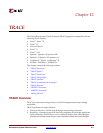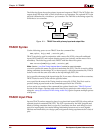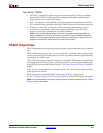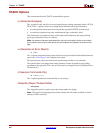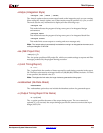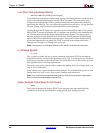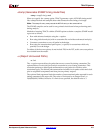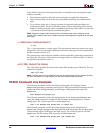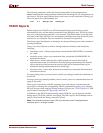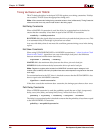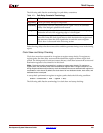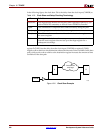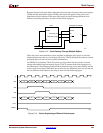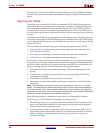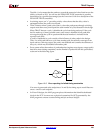
218 www.xilinx.com Development System Reference Guide
Chapter 12: TRACE
R
In the TRACE report, the following information is included for the unconstrained path
analysis constraint.
• The minimum period for all of the uncovered paths to sequential components.
• The maximum delay for all of the uncovered paths containing only combinatorial
logic.
• For a verbose report only, a listing of periods for sequential paths and delays for
combinatorial paths. The list is ordered by delay value in descending order, and the
number of entries in the list can be controlled by specifying a limit when you enter the
–v (Generate a Verbose Report) command line option.
Note:
Register-to-register paths included in the unconstrained path report undergoes a hold
violation (race condition) check only for paths whose start and endpoints are registered on the same
clock edge.
–v (Generate a Verbose Report)
–v limit
The –v option generates a verbose report. The report has the same root name as the input
design and a .twr. You can assign a different root name for the report on the command line,
but the extension must be .twr.
The optional limit used to limit the number of items reported for each timing constraint in
the report file. The value of limit must be an integer from 1 to 32,000 inclusive. If a limit is
not specified, the default value is 3.
–xml (XML Output File Name)
The –xml option specifies the name of the output XML timing report (TWX) file. The .twx
extension is optional.
–xml
outfile[.twx]
Note: The XML report is not formatted and can only be viewed with the Timing Analyzer GUI tool.
For more information on Timing Analyzer, see the online help provided with the tool.
TRACE Command Line Examples
The following command verifies the timing characteristics of the design named
design1.ncd, generating a summary timing report. Timing constraints contained in the file
group1.pcf are the timing constraints for the design. This generates the report file
design1.twr.
trce design1.ncd group1.pcf
The following command verifies the characteristics for the design named design1.ncd,
using the timing constraints contained in the file
group1.pcf and generates a verbose
timing report. The verbose report file is called
output.twr.
trce –v 10 design1.ncd group1.pcf –o output.twr
The following command verifies the timing characteristics for the design named
design1.ncd, using the timing constraints contained in the file group1.pcf, and generates a
verbose timing report (TWR report and XML report). The verbose report file is called
design1.twr, and the verbose XML report file is called output.twx.
trce –v 10 design1.ncd group1.pcf –xml output.twx



